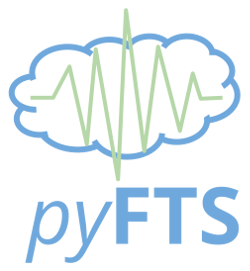pyFTS.models.multivariate package¶
Module contents¶
Multivariate Fuzzy Time Series methods
Submodules¶
pyFTS.models.multivariate.FLR module¶
pyFTS.models.multivariate.common module¶
-
class
pyFTS.models.multivariate.common.MultivariateFuzzySet(**kwargs)[source]¶ Bases:
pyFTS.common.Composite.FuzzySetMultivariate Composite Fuzzy Set
-
append_set(variable, set)[source]¶ Appends a new fuzzy set from a new variable
Parameters: - variable – an multivariate.variable instance
- set – an common.FuzzySet instance
-
pyFTS.models.multivariate.variable module¶
-
class
pyFTS.models.multivariate.variable.Variable(name, **kwargs)[source]¶ Bases:
objectA variable of a fuzzy time series multivariate model. Each variable contains its own transformations and partitioners.
-
alias= None¶ A string with the alias of the variable
-
alpha_cut= None¶ Minimal membership value to be considered on fuzzyfication process
-
data_label= None¶ A string with the column name on DataFrame
-
data_type= None¶ The type of the data column on Pandas Dataframe
-
mask= None¶ The mask for format the data column on Pandas Dataframe
-
name= None¶ A string with the name of the variable
-
partitioner= None¶ UoD partitioner for the variable data
-
transformation= None¶ Pre processing transformation for the variable
-
pyFTS.models.multivariate.flrg module¶
-
class
pyFTS.models.multivariate.flrg.FLRG(**kwargs)[source]¶ Bases:
pyFTS.common.flrg.FLRGMultivariate Fuzzy Logical Rule Group
pyFTS.models.multivariate.mvfts module¶
-
class
pyFTS.models.multivariate.mvfts.MVFTS(**kwargs)[source]¶ Bases:
pyFTS.common.fts.FTSMultivariate extension of Chen’s ConventionalFTS method
-
append_variable(var)[source]¶ Append a new endogenous variable to the model
Parameters: var – variable object Returns:
-
apply_transformations(data, params=None, updateUoD=False, **kwargs)[source]¶ Apply the data transformations for data preprocessing
Parameters: - data – input data
- params – transformation parameters
- updateUoD –
- kwargs –
Returns: preprocessed data
-
forecast(data, **kwargs)[source]¶ Point forecast one step ahead
Parameters: - data – time series data with the minimal length equal to the max_lag of the model
- kwargs – model specific parameters
Returns: a list with the forecasted values
-
forecast_ahead(data, steps, **kwargs)[source]¶ Point forecast n steps ahead
Parameters: - data – time series data with the minimal length equal to the max_lag of the model
- steps – the number of steps ahead to forecast
- start – in the multi step forecasting, the index of the data where to start forecasting
Returns: a list with the forecasted values
-
pyFTS.models.multivariate.wmvfts module¶
-
class
pyFTS.models.multivariate.wmvfts.WeightedFLRG(**kwargs)[source]¶ Bases:
pyFTS.models.multivariate.flrg.FLRGWeighted Multivariate Fuzzy Logical Rule Group
-
class
pyFTS.models.multivariate.wmvfts.WeightedMVFTS(**kwargs)[source]¶ Bases:
pyFTS.models.multivariate.mvfts.MVFTSWeighted Multivariate FTS
pyFTS.models.multivariate.cmvfts module¶
-
class
pyFTS.models.multivariate.cmvfts.ClusteredMVFTS(**kwargs)[source]¶ Bases:
pyFTS.models.multivariate.mvfts.MVFTSMeta model for multivariate, high order, clustered multivariate FTS
-
forecast(ndata, **kwargs)[source]¶ Point forecast one step ahead
Parameters: - data – time series data with the minimal length equal to the max_lag of the model
- kwargs – model specific parameters
Returns: a list with the forecasted values
-
forecast_multivariate(data, **kwargs)[source]¶ Multivariate forecast one step ahead
Parameters: - data – Pandas dataframe with one column for each variable and with the minimal length equal to the max_lag of the model
- kwargs – model specific parameters
Returns: a Pandas Dataframe object representing the forecasted values for each variable
-
fts_method= None¶ The FTS method to be called when a new model is build
-
fts_params= None¶ The FTS method specific parameters
-
model= None¶ The most recent trained model
-
